With middle-skill jobs lagging, workers need to adapt to stay relevant. And as occupations continue to evolve, ongoing training shifts from a luxury into a necessity—a necessity Penn Foster has provided for more than 100 years.
“The principle from the beginning is that there’s a population of people in the United States who are underserved and need training,” says Frank Britt, Penn Foster’s CEO. “It was true in 1890, and it’s true now.”
Penn Foster’s origins trace back to a group of nineteenth-century coal miners who were striving to become superintendents and foremen. Although ambitious, they had no way of learning the skills necessary to advance. Pennsylvania newspaper editor Thomas Foster recognized the dilemma, developing the distance-learning method to provide miners with the after-work training they needed to receive promotions.
By 1945, five million students had enrolled in Penn Foster training programs. Today, the number is closer to 13 million, and only expected to rise.
The Penn Foster team understands a one-size-fits-all approach can’t be taken to education, and has therefore provided a more flexible way to obtain either a high school diploma or a college degree.
“We continue to modernize the student experience,” Britt says, following up by referring to three risk factors facing alternative learners: financial, academic and motivational.
Penn Foster prides itself on pricing, claiming their per credit fees are 70 percent lower—at $70—than those at comparative schools, including community colleges. To make the money worth spending, the school has created, what Britt calls, “community capabilities,” so that motivation is not self-driven.
The price begs the question, however: why pay for an online education when most massive open online courses are free?
Britt describes MOOCs as something best suited for the “overeducated and underemployed.” Although he admits to making a “gross generalization,” he also acknowledges people “taking computer science classes at Stanford but living in New York City are not considering going to Penn Foster.” Mothers trying to raise two children and advance in their career are the ones enrolling in Penn Foster instead.
“You will continue to come in and out of the learning ecosystem over the course of your life,” says Britt, who sees Penn Foster as a ramp to the next step in one’s academic journey, whether that next step be a four-year college or employment.
Penn Foster College offers bachelor’s degrees, associate degrees and individual courses, while the Penn Foster Career School provides diplomas and certificates in more than 80 different areas. Penn Foster High School also offers diplomas, but allows students to work through the younger years of academia at their own pace.
“We are not the enemy of community colleges and high schools,” Britt says. “You will never see me write an article saying community colleges are outdated. We can help high schools, community colleges or employers build another layer of value to what they provide.”
Although primarily distance-based, Penn Foster provides hybrid programs, as well, mixing online training with on-site work experience. They have also created a community to give students the ability to record and upload video from their webcam, create their own personal blog and form social groups with peers in their community—taking Penn Foster leaps beyond traditional online education.
“We don’t want to be viewed as the distance learning company, but as a platform company,” Britt says, which is why Penn Foster recently expanded outside of Pennsylvania and Arizona to open up offices here in Boston.
Britt acknowledges Boston is emerging as an innovation hub for education, claiming it just made sense for Penn Foster, and a majority of the senior team, to move here. As the platform continues to “aggressively innovate,” what better place to be than the city?
“We’ve always fallen below the cloud line a bit,” Britt acknowledges. “But it’s time to announce to the world we’re here.” As a middle-skill-based, hybrid delivery model, Britt is quick to say Penn Foster isn’t just part of a movement, but “at the epicenter.” Soon, they hope to say the epicenter.
Content from:
